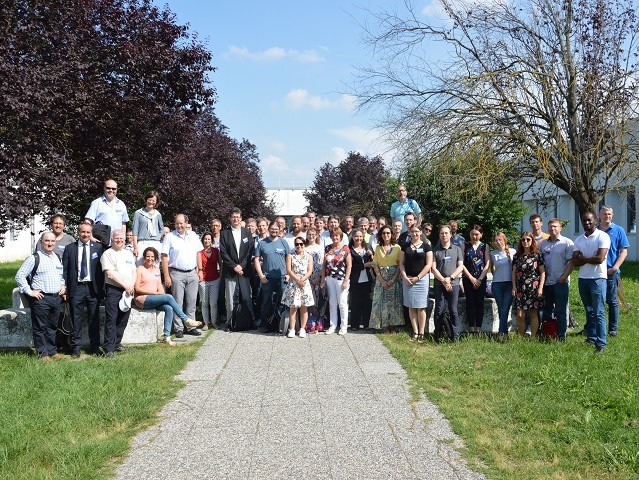SINE2020 General Assembly in Parma 2018
Management and Coordination Our Project Team Miriam Förster and Martin Böhm compiled SINE2020's 1st Periodic Review covering the first 18 months of the project. Dissemination Anke Görg has been reporting news via the project's social media channels (Facebook, Twitter, LinkedIn and YouTube), news articles and website updates. She has also been helping Industry Consultancy. E-learning and Schools The purpose of the e-learning platform e-neutrons.org is to provide free training materials for those unable to attend hands-on courses and to encourage new users to the community. Ongoing content development of e-neutrons.org was reported, including 10 new topics in neutrons and 6 new topics in muons. Work is also advancing on the virtual platform. SINE2020 money has helped fund Schools that otherwise may not have been able to run and have helped grow the neutron and muon community. To date there have been at least 24 Schools organised, with more to come in the next year. Industry Consultancy Marc Thiry and Caroline Boudou have been busy attending 35 industrial events to promote what neutron experiments can offer industrial companies, and organising 6 events of their own, including SYNERGI2018 in Amsterdam. 25 free feasibility studies for industry were accepted from 34 applications and several Case Studies from the work have been published, with more to come. One company, Biomodics, has even returned for more studies, this time as a paying customer. Chemical Deuteration The set-up of the European Deuteration Network DEUNET has now led to further developments in the community such as a newsletter, blog and user survey to understand the deuteration needs of different users and organisations. The synthesis projects that form part of this work package are also making good progress. Crystal Growth The aim of the Crystal Growth team is to develop reliable methods of growing good quality crystals suitable for studying with neutrons. A prototype robotic system has been developed for the purpose of protein crystallization with the ability to run many experiments at once. Additional research has been conducted into the magnetic alignment of protein micro crystals using high magnetic fields. Sample Environment Version 1 of the Sample Environment Communication Protocol (SECoP) to facilitate communication between instrument control workstations and sample environment equipment is now available on GitHub. Other developments included: Cryostats and furnaces that are now 3 to 5 times faster whilst producing up to 3 times less background, a great improvement in efficiency; Muon instruments that can now perform experiments at 50% higher pressures on larger samples and neutron scattering clamp cells are going to follow the same route; NMR experiments combined with neutron scattering are now possible and muonium chemistry is becoming a reality. E-tools Peter Willendrup reported that the team has been working on improved code interfaces including incorporation into the McStas simulation software package. Computational tests are also underway and the investigation into new shielding materials for instruments have led to some good candidates being identified. Detectors Work is continuing on Scintillation detectors and microstrip gas chambers in order to improve resolution and capabilities. Several different types of Emergent Neutron detectors have been developed and in many cases prototypes have been built and tested, for example Resistive Plate Chambers incorporating 10-Boron, Silicon Photomultipliers and Micromegas detectors. Data Treatment The key milestones of this work package: Workshops I and II have been held and Workshop III was scheduled for the day after the General Assembly. The deliverable Guidelines and Standards has been produced and is now available.
Keywords
neutrons, SINE2020
Countries
Italy



